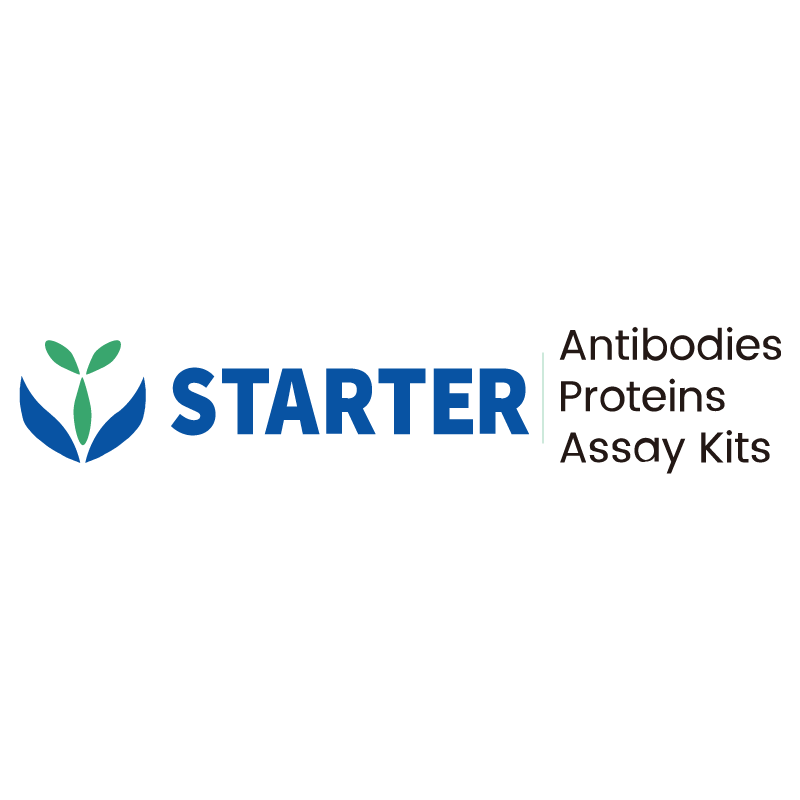Immobilized Human ANGPT2 Protein, His tag at 2 μg/mL (100 μL/well) can bind Tie-2 Fc Chimera, Cynomolgus (Cat. No. UA010526) with EC50 of 0.07-0.15 μg/ml.
Product Details
Product Details
Product Specification
| Species | Human |
| Synonyms | Angiopoietin-2, ANG-2 |
| Accession | O15123 |
| Amino Acid Sequence | Protein sequence (O15123, Asp68-Phe496, with C-His tag) DAPLEYDDSVQRLQVLENIMENNTQWLMKLENYIQDNMKKEMVEIQQNAVQNQTAVMIEIGTNLLNQTAEQTRKLTDVEAQVLNQTTRLELQLLEHSLSTNKLEKQILDQTSEINKLQDKNSFLEKKVLAMEDKHIIQLQSIKEEKDQLQVLVSKQNSIIEELEKKIVTATVNNSVLQKQQHDLMETVNNLLTMMSTSNSAKDPTVAKEEQISFRDCAEVFKSGHTTNGIYTLTFPNSTEEIKAYCDMEAGGGGWTIIQRREDGSVDFQRTWKEYKVGFGNPSGEYWLGNEFVSQLTNQQRYVLKIHLKDWEGNEAYSLYEHFYLSSEELNYRIHLKGLTGTAGKISSISQPGNDFSTKDGDNDKCICKCSQMLTGGWWFDACGPSNLNGMYYPQRQNTNKFNGIKWYYWKGSGYSLKATTMMIRPADF |
| Expression System | HEK293 |
| Molecular Weight | Predicted MW: 51 kDa Observed MW: 72 kDa |
| Purity | >95% by SDS-PAGE |
| Endotoxin | <0.1EU/μg |
| Conjugation | Unconjugated |
| Tag | with C-His tag |
| Physical Appearance | Lyophilized Powder |
| Storage Buffer | Lyophilized from a 0.2 μm filtered solution of 0.2M PBS, pH7.4. |
| Reconstitution | Reconstitute no more than 1 mg/mL according to the size in deionized water after rapid centrifugation. |
| Stability & Storage | 12 months from date of receipt, -20 to -70 °C as supplied. |
Background
Angiopoietin - 2 (ANGPT2) is a significant protein in the angiopoietin family. It plays a crucial role in angiogenesis, the process of new blood vessel formation. ANGPT2 is produced by endothelial cells and acts as a key regulator in vascular remodeling. Functionally, ANGPT2 binds to the Tie2 receptor on endothelial cells. In the presence of vascular endothelial growth factor (VEGF), ANGPT2 promotes endothelial cell destabilization, leading to increased vascular permeability and facilitating angiogenesis. However, in the absence of VEGF, it can cause vessel regression. Abnormal levels of ANGPT2 have been linked to various pathological conditions. In cancer, elevated ANGPT2 often correlates with tumor angiogenesis and metastasis, as tumors rely on new blood vessels for growth and spread. Additionally, it is involved in inflammatory diseases and eye disorders related to abnormal blood vessel growth, making it an important target for research into novel therapies.
Picture
Picture
Bioactivity
SDS-PAGE
2μg(R: reducing conditions)


